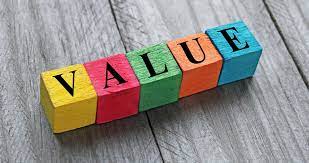Requirements gathering and qualification are important sales skills.
If you don’t understand what your potential client wants then your value proposition is likely to not align to their needs.
In addition if you spend too much time on unqualified prospects then you will likely waste your time and not consistently get sales.
Active listening is very important during qualification and requirements gathering.
Active listening and asking questions gets your potential prospect to open up more and dive further into topics of interest.
There are several different question types. In most scenarios most of the time your goal is to ask open ended questions. Open ended questions begin with who, what, why, when, or how. You want to ask open ended questions because you want the conversation to continue. Close ended questions or questions that get a yes or no answer will stop the train of thought in the conversation.
Let’s discuss the question types further.
You can ask a drill down question to get deeper into a statement, you can ask quantifying questions, or you can ask for examples.
Drill down questions could be “Tell me more about . . .”, “Elaborate more on . . .”, or “What do you mean by . . .”.
Quantifying questions could be “How would you measure . . .”, “How would you quantify . . .”, or “What was the thinking behind . . . “.
When asking for examples use statements such as “Give me some examples of . . .”, or “What are examples of . . .”.
You want to understand issues, priorities, who is involved, and processes.
When you look at issues you want to understand the current state, a list of problems, the impacts of those problems, and group them by highest priority.
There could be many people or groups involved but you want to focus on understanding the champion to solve a problem, executive sponsorship, organizational hierarchy, and any additional activities you can think of to improve the relationship.
When determining priorities you want to understand the ideal state and benefits associated with solving the problem defined in specific detail, the desired return on investment, and a mutual plan for what is required to close a deal.
Finally, you want to understand the decision-making process, who is involved in evaluating solutions, the final steps to buying the solution, and any risks identified at that time.
When speaking with the prospect you want to understand what is driving their buying decision. You want to understand why us, their budget, and why now.
As you are asking these questions be sure to document the conversation in as much detail as you can. It is best if you can record the conversation however your potential prospect may not be comfortable with that. So, ask first.
Additionally, as you hear answers to questions be sure to summarize for your understanding and check back that your understanding is correct.
Prepare as much as you can for a requirements meeting. Research the individual on LinkedIn, research the company if you’re meeting with a particular company, write a list of questions on a word document or piece of paper that you can take notes with, and practice asking questions and imagine some of the responses if time permits. It also may be a good idea to role play with someone else as well if available.
After the session organize your notes and send a follow up e-mail to recap the conversation and set up next steps.
As you review your notes think about any additional points that you need to clarify. If necessary set up a follow-up session or give your potential prospect a call.
Once you have sufficient detail from requirements then you’re ready to create your presentation and set up a follow-up meeting for the read-out.


